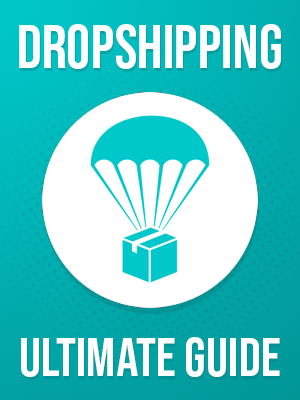Ultimate Dropshipping Guide
Chapter 7: Inventory & Order Management

Managing Dropship Inventory
In this chapter, we are going to mostly focus on the ordering process as we have already laid out the different inventory management scenarios in our Ultimate Guide: How to Build an Ecommerce Website. However, to provide some quick context, here is a brief explanation.
When we talk about “managing dropship inventory”, we are typically referring to the process of syncing your suppliers inventory data to your online store via a product data feed. A product data feed can come in many formats (XML, CSV, TXT, EDI to get technical). But, just think of it is a spreadsheet, which it often is, that provides the necessary product information you need to work with a dropship supplier.
When first getting setup with a supplier, you will want to ask for and receive a product data feed that contains at minimum the product identifier (typically SKU, MPN, or UPC), the quantities, and your cost. You will also want to clarify how often this data is updated and how you receive an updated file. This can be provided daily via email, or for more tech savvy suppliers, hourly via FTP or an HTTP link. Ideally, they also provide product detail data such as titles, descriptions, categories, UPCs, images and more; however, this is not always the case. For a more in depth look at how to integrate the product data feed and how to overcome the different challenges in keeping inventory in sync, be sure to check out Chapter 4: How to Integrate Dropshipping Inventory of our Ultimate Guide: How to Build an Ecommerce Website.
Managing Dropship Orders
Once you receive your first order, it (hopefully) goes without saying that you should have already created a reseller account with your dropship supplier and they have provided some kind of instructions on how they accept orders from their dropship resellers. There are a few different models and ones that involve purchasing from a third party. For the sake of this guide, we are going to look at the model in which you have a direct relationship with your dropship supplier who actually warehouses and owns the products they are selling and accepts orders in a few common ways.
Common Ways Dropship Suppliers Accept Orders
- By email (no format requirements)
- By email with an attached file (with specific format and data)
- Via their website or “dealer portal”
- Over API / EDI
- Via a specific “flat file” or spreadsheet format on an FTP folder
- Over the phone
Okay, now that we have clarified how supplier’s typically accept orders, let’s go into how to automate this process.
How to Automate Email Orders
This is probably one of the most common and easiest parts of dropshipping to automate. Almost all the major ecommerce platforms (shopping carts) have the ability to automatically send emails to dropship suppliers when you receive an order. The way this is accomplished in most software is by assigning a supplier (and supplier email) to each product. Once again when you start getting into fulfilling the same product from multiple sources (suppliers), you will need to look outside the standard ecommerce platform and into order management solutions like Ordoro, Stitch Labs, and Bright Pearl. If the supplier requires the email to have an attachment in a specific format with specific data, you may need to start looking at solutions that provide a tight integration to your dropship supplier. This is where a dropship automation solution can help you truly automate your processes.
How to Automate Orders via API / EDI
If your supplier offers the ability to send orders via their API, it is almost always a custom solution. This requires a developer to look at the API and write the code to be able to pass the orders from your ecommerce platform to their order management software. It also requires management and maintenance of that integration to prevent it from breaking or inaccurately routing orders. Hiring a developer or finding someone who has already built to the supplier’s API are typically the only two options.
How to Automate Orders via FTP
This is very similar to the API integration as it usually requires a tech-savvy retailer or developer to be able to automatically send a file to an FTP folder. However, there more and more apps in the ecommerce marketplaces that may be able to solve this problem for you.
How to Automate Orders on the Website or Dealer Portal
This is not usually possible. The only way would be to build some custom scraping software, but it is not recommended as it would likely break with a change to their website in any way.
How to Automate Orders Over the Phone
In all seriousness, you could hire a virtual assistant. Someone to be notified of orders as they come in and pick up the phone to call your supplier. Besides that, I’m out of ideas. Please let us know on Twitter (@InventorySource) if you have something better… Seriously, I’m sure there are some other creative ways people are doing this out there. We are all ears.
If you found this guide helpful, share the love:
Woohoo! You are now a dropshipping expert! Now what?
Sign up today to view our vetted directory of over 230 dropshipping suppliers for free!
Need help building your own ecommerce website?
Check out our Ultimate Guide on how to build an ecommerce website.
Chapter List
Chapter 1:
What is Dropshipping?
Chapter 2:
Forming a Legal Dropshipping Business
Chapter 3:
What to Sell Online
Chapter 4: